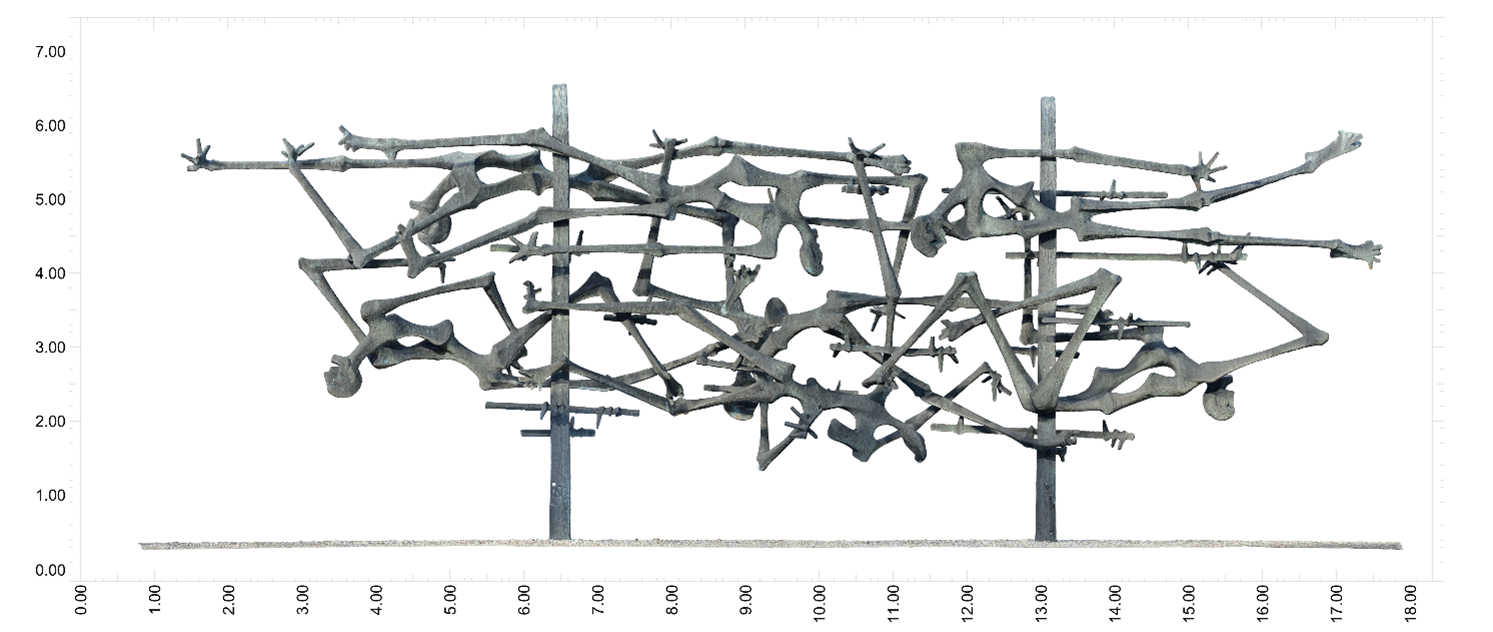- Client
- Dachau Concentration Camp Memorial | Metal restoration specialists from Haber & Brandner (Regensburg)
- Content
- Combined processing of 3D laser scans and 3D photogrammetries
- Related references
- 3D-Scan der Skulptur Quo Vadis
- Tags
In 2019/2020, ArcTron 3D GmbH carried out the 3D documentation and visualization of the concentration camp memorial scupture in Dachau. This project was commissioned by the Dachau Concentration Camp Memorial and the metal restoration specialists at Haber & Brandner (Regensburg).
The memorial sculpture (L. 16,27m, H. 6,16m, W. 2,80m) was created in 1969 by the Yugoslavian artist Nandor Glid (12.12.1924 – 31.03.1997), who lost his father and most of his family in Auschwitz. He won the international competition for this commemorative sculpture in 1967. The complex sculpture depicts “stakes, ditches and barbed wire” as symbols of the concentration camp’s security installations. Human skeletons, entangled in the barbed wire, commemorate those who, out of desperation, “went into the wire” and thus took their own lives.

In the run-up to the restoration work, a high-resolution, millimeter-accurate 3D model was generated in a combination of 3D laser scanning (RIEGL VZ400) and photogrammetry (NIKON D800E). For this purpose, 3D laser scans were taken from about 40 positions – some of them also remotely controlled via WLAN from a lifting platform. Subsequently, the entire object could be documented from the ground and from the lifting platform with approx. 7,500 high-resolution photos with calibrated DSLR camera (36 MP) and high-quality lenses. From a technical point of view, the project was challenging to realize due to the complex geometries with many undercuts and undercuts.
For the combined processing of 3D laser scans and 3D photogrammetry, we use and distribute the powerful photogrammetry suite Reality Capture (Epic Games). The result is an extremely detailed 3D model of the memorial sculpture and accurate documentation with orthophotos, which were used for further planning and documentation of the restoration work.